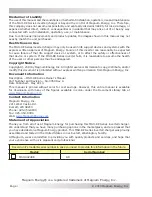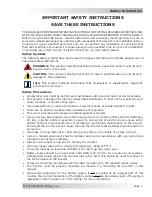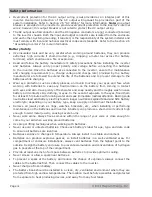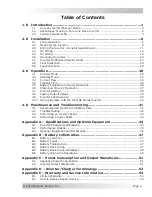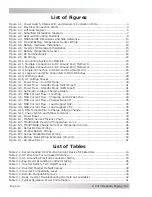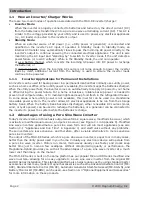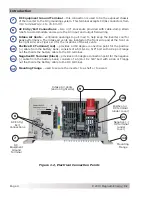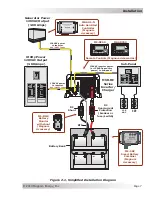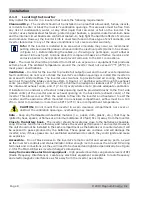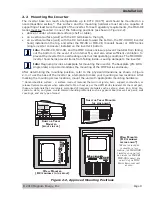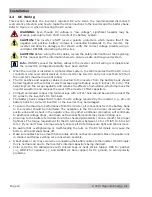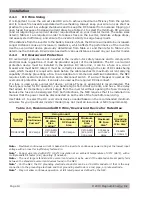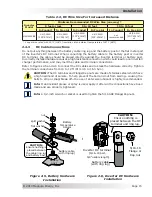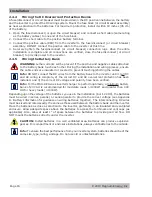
©
2013 Magnum Energy, Inc.
Page 2
Introduction
1.1 How an Inverter/Charger Works
There are two main modes of operation associated with the MSH-RE inverter/charger:
•
Inverter Mode
:
When the inverter is properly connected to batteries and turned on, the direct current (DC)
from the batteries is transformed into a pure sine wave alternating current (AC). This AC is
similar to the voltage provided by your utility and is used to power any electrical appliances
(i.e., AC loads) connected to the inverter’s output.
•
Standby Mode
:
When an external source of AC power (i.e., utility power or generator) is connected and
quali
fi
ed on the inverter’s AC input, it operates in Standby mode. In Standby mode, an
internal AC transfer relay automatically closes to pass the incoming AC power directly to the
inverter’s output to continue powering the connected electrical appliances. The unit is also
monitoring the AC input and “standing-by” to switch to Inverter mode if the unit detects a
power failure (or low AC voltage). While in the Standby mode, the unit can operate:
a) as a battery charger, which converts the incoming AC power into DC power to recharge
the batteries; or
b) in load support, when the incoming AC source is not large enough to power the inverter
loads by itself, additional current from the battery is used to ensure the inverter loads
continue to be powered.
1.1.1
Inverter Applications for Permanent Installations
An inverter can be used for backup power in a permanent location that normally uses utility power,
such as a home or of
fi
ce. When utility power is available, the inverter keeps the batteries charged.
When the utility power fails, the inverter comes on automatically to supply AC power to your home
or of
fi
ce during the power failure. For a home or business, reliable backup power is needed to
prevent lost computer data, or to maintain lights and keep food fresh in the refrigerator/freezer.
In some areas, where utility power is not available, this inverter can be used in a standalone
renewable power system. The inverter allows AC electrical appliances to be run from the storage
battery bank. When the battery bank becomes discharged, either renewable DC sources (solar,
wind, or hydro power) can be used to recharge the batteries, or a generator can be connected to
the inverter to power the system while the batteries recharge.
1.2 Advantages of using a Pure Sine Wave Inverter
Today’s inverters come in three basic output waveforms: square wave, modi
fi
ed sine wave (which
is actually a modi
fi
ed square wave), and pure sine wave (see Figure C-1 in Appendix C). Modi
fi
ed
sine wave inverters approximate a pure sine wave form and will run most appliances (see also
Section C-1 “Appliances and Run Time” in Appendix C) and electronics without any problems.
These inverters are less expensive, and therefore, offer a viable alternative to more expensive
pure sine inverters.
The output of the MSH-RE Series, which is a pure sine wave inverter, is equal to or in many cases,
better than the utility power used in your home. Virtually any electronic device will operate from
a pure sine wave inverter. Motors run cooler, microwaves usually cook faster, and clocks keep
better time just to name a few examples. Without compromising quality or performance, the
MagnaSine-Hybrid provides you with all the advantages of a pure sine wave inverter at a much
lower cost than many on the market.
The MSH-RE Series is built on the same platform as our popular ME and RD Series modi
fi
ed sine
wave inverters—allowing for an easy upgrade to a pure sine wave inverter from the original ME
and RD Series installation. This standard platform also helps reduce cost by using standard parts/
accessories across many models. Magnum accessories such as the Advanced Remote Control (ME-
ARC), Standard Remote Control (ME-RC), Automatic Generator Start-Networked (ME-AGS-N), and
Battery Monitor Kit (ME-BMK) can be used—see Section A-3 “Optional Equipment and Accessories”
for more information on these products.


